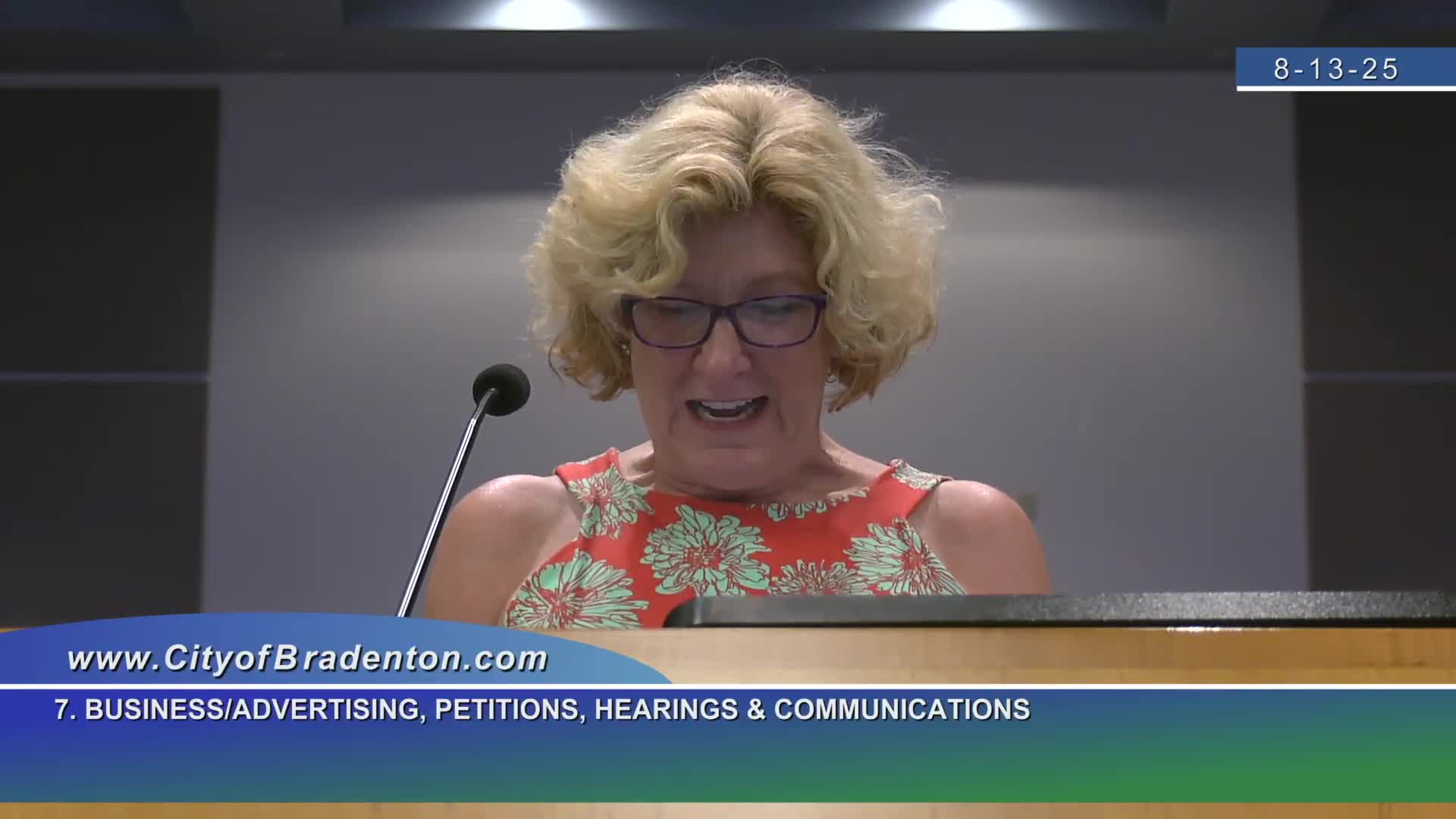Residents Oppose Westminster's 12 Story Building Proposal in Historic Point Pleasant District
August 18, 2025 | Bradenton City, Manatee County, Florida
This article was created by AI summarizing key points discussed. AI makes mistakes, so for full details and context, please refer to the video of the full meeting. Please report any errors so we can fix them. Report an error »

In the heart of Bradenton, where historic homes stand as testaments to the past, a heated debate unfolded at the City Council meeting on August 13, 2025. Residents voiced their concerns over proposed zoning changes that could dramatically alter the character of their cherished neighborhood.
James Park, a resident of the Point Pleasant Historic District, passionately opposed ordinances 40-36 and 40-37, which would allow for the construction of a 12-story building adjacent to single-family homes. “This is a quaint neighborhood,” he stated, emphasizing the potential impact on the community’s charm and safety. Park highlighted the existing strain on local infrastructure, including a sewage system already in disrepair, and warned that increased population density would exacerbate these issues. “The streets are narrow and difficult for two cars to drive down,” he noted, raising alarms about the dangers posed by heightened traffic.
The Point Pleasant neighborhood, known for its diverse architectural styles and historic significance, has zoning regulations that currently limit building heights to a maximum of six stories. Park argued that the proposed T5 zoning would not only disrupt the aesthetic harmony but also eliminate necessary buffers between high-rise developments and historic homes. “There is a high-rise building at a sidewalk a few feet from the historic home,” he lamented, painting a vivid picture of the looming changes.
Another resident, Brian Parks, echoed these sentiments, urging the council to reconsider the implications of the proposed ordinances. He stressed that while modernization is important, it should not come at the cost of the neighborhood's integrity. “If Westminster wants to renovate or redevelop, please do so, but do not change their ordinances,” he implored.
As the meeting progressed, it became clear that the community's voice was united in its desire to protect the historical essence of Point Pleasant. The council members listened intently, weighing the concerns of residents against the backdrop of urban development and modernization. The outcome of this meeting could set a precedent for how Bradenton balances growth with the preservation of its rich history, leaving many residents anxious about what the future holds for their beloved neighborhood.
James Park, a resident of the Point Pleasant Historic District, passionately opposed ordinances 40-36 and 40-37, which would allow for the construction of a 12-story building adjacent to single-family homes. “This is a quaint neighborhood,” he stated, emphasizing the potential impact on the community’s charm and safety. Park highlighted the existing strain on local infrastructure, including a sewage system already in disrepair, and warned that increased population density would exacerbate these issues. “The streets are narrow and difficult for two cars to drive down,” he noted, raising alarms about the dangers posed by heightened traffic.
The Point Pleasant neighborhood, known for its diverse architectural styles and historic significance, has zoning regulations that currently limit building heights to a maximum of six stories. Park argued that the proposed T5 zoning would not only disrupt the aesthetic harmony but also eliminate necessary buffers between high-rise developments and historic homes. “There is a high-rise building at a sidewalk a few feet from the historic home,” he lamented, painting a vivid picture of the looming changes.
Another resident, Brian Parks, echoed these sentiments, urging the council to reconsider the implications of the proposed ordinances. He stressed that while modernization is important, it should not come at the cost of the neighborhood's integrity. “If Westminster wants to renovate or redevelop, please do so, but do not change their ordinances,” he implored.
As the meeting progressed, it became clear that the community's voice was united in its desire to protect the historical essence of Point Pleasant. The council members listened intently, weighing the concerns of residents against the backdrop of urban development and modernization. The outcome of this meeting could set a precedent for how Bradenton balances growth with the preservation of its rich history, leaving many residents anxious about what the future holds for their beloved neighborhood.
View full meeting
This article is based on a recent meeting—watch the full video and explore the complete transcript for deeper insights into the discussion.
View full meeting